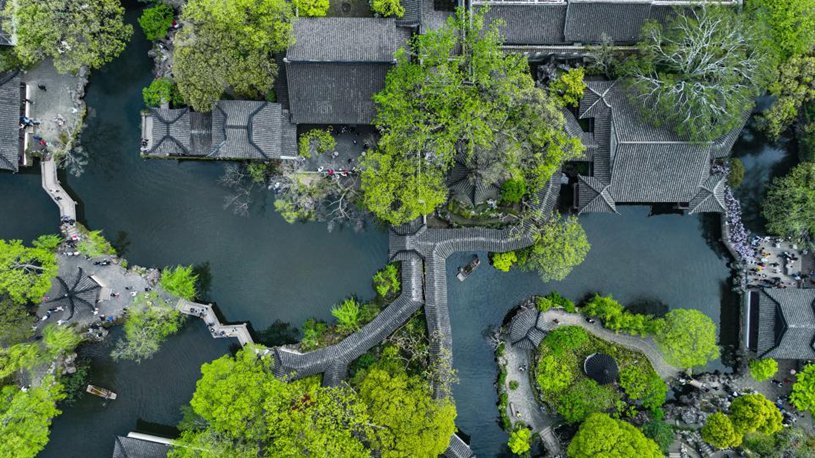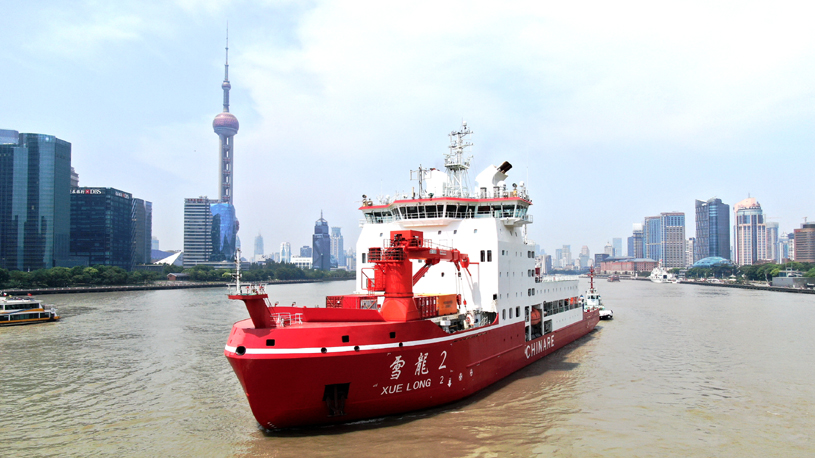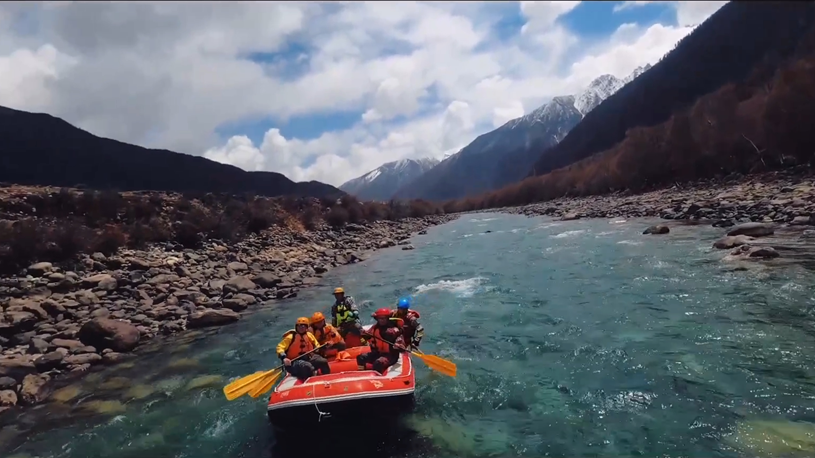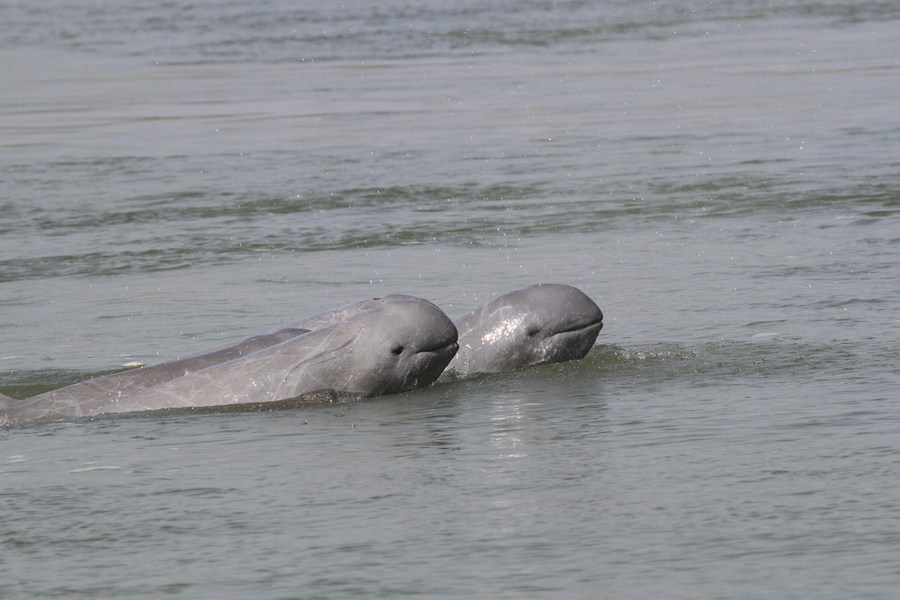
Photo released on Oct. 23, 2020 shows Irrawaddy dolphins swimming in the Mekong River in Kratie province, northeast Cambodia. (WWF-Cambodia/Handout via Xinhua)
With help from China, it was estimated that there were 89 Irrawaddy dolphin population in the Cambodian portion of the Mekong River in 2020, an increase of nine individuals from 80 in 2015, said Cambodian official Phay Somany.
PHNOM PENH, July 15 (Xinhua) -- The ongoing cooperation with China is essential to help protect critically endangered Mekong River Irrawaddy dolphins in Cambodia, a senior official said on Thursday.
Phay Somany, deputy director of the Fisheries Conservation Department at the Fisheries Administration of Cambodia's Ministry of Agriculture, Forestry and Fisheries, said the kingdom is willing to learn experience from China's conservation of the Yangtze finless porpoise.
He said Cambodia has been working closely with the Institute of Hydrobiology of the Chinese Academy of Sciences, and the Freshwater Fisheries Research Center (FFRC) of the Chinese Academy of Fisheries Sciences to research and protect the Mekong River Irrawaddy dolphins in the country.
"We have good relations with the Institute of Hydrobiology, an institute that has been researching and protecting the Yangtze finless porpoise in the Yangtze River," he told Xinhua in an interview.
"The experts from this institute have always provided us with technical support. For example, in past years, they had given presentations on their experience and modern scientific research to our Cambodian experts," he said.
Somany praised the Chinese government for having paid high attention to protecting the Yangtze finless porpoise species from extinction, recovering this species' number from below 100 individuals to more than 3,000 individuals at present.
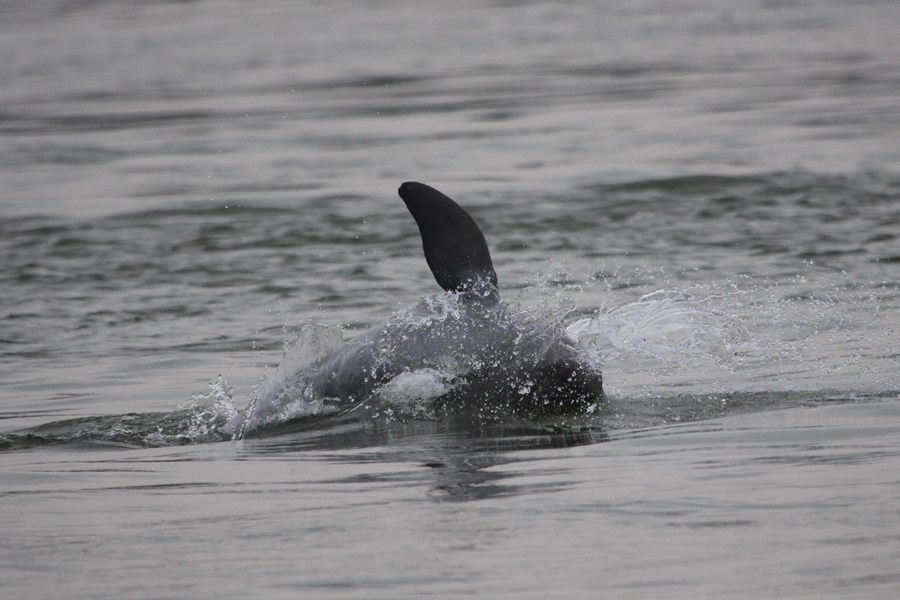
Photo released on Oct. 23, 2020 shows an Irrawaddy dolphin swimming in the Mekong River in Kratie province, northeast Cambodia. (WWF-Cambodia/Handout via Xinhua)
For the FFRC, he said the center has been supporting the Fisheries Administration in researching dolphins and fish species along the Mekong River in Cambodia and this project has been carried out since 2020.
Moreover, the Fisheries Administration has also received funds from the Lancang-Mekong Cooperation's Special Fund to implement a project on capacity building for the conservation of freshwater dolphins and biodiversity, he said.
"This is an achievement proving that Cambodia and China have good cooperation and have always provided mutual support in the protection of natural resources, especially the Mekong River dolphins," Somany said.
"I hope we will continue to receive technical and financial assistance (from China) so that we can continue to protect the Mekong River dolphins and other biodiversity," he added.
The Mekong River Irrawaddy dolphins have been listed as critically endangered on the International Union for Conservation of Nature Red List of Threatened Species since 2004.
Somany said the rare animals inhabit a 190-km stretch of the Mekong River from Koh Trong island opposite Kratie provincial town to the Cambodia-Laos border.
He said it was estimated that there were 89 Irrawaddy dolphin population in the Cambodian portion of the Mekong River in 2020, an increase of nine individuals from 80 in 2015.
"The Mekong River dolphins are considered as the national living treasure by the Cambodian government and the animals have played an important role in attracting tourists," he said.

Photo released on Oct. 23, 2020 shows Irrawaddy dolphins swimming in the Mekong River in Kratie province, northeast Cambodia. (WWF-Cambodia/Handout via Xinhua)
He said a major threat to the dolphins, especially the calves, is illegal fishing practices, using illegal gear such as gillnets and long-line hooks to catch other fish in dolphin conservation zones.
"Gillnets are a kind of fishing gear that can entangle and kill dolphins easily," he said. "Although their habitats have been protected by law, some fishermen still illegally deploy gillnets in dolphin conservation zones."
Somany said in a bid to prevent illegal fishing, a total of 72 river guards have been deployed to 16 stations to patrol the dolphin habitats routinely. ■



